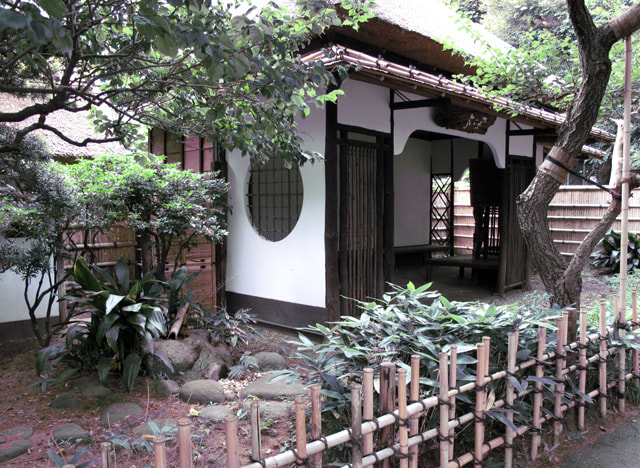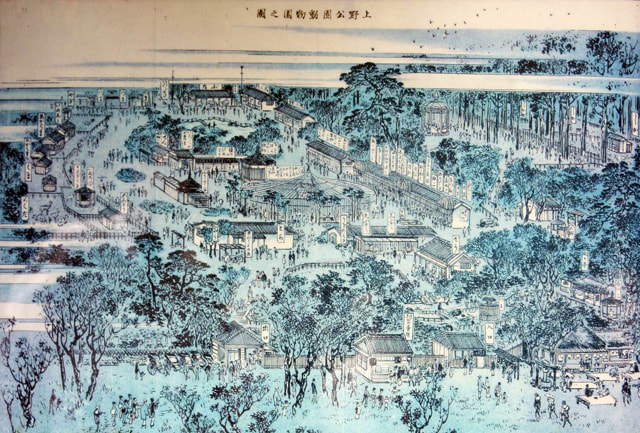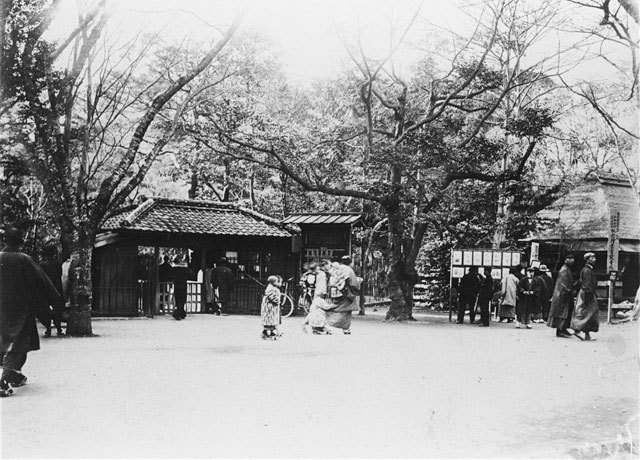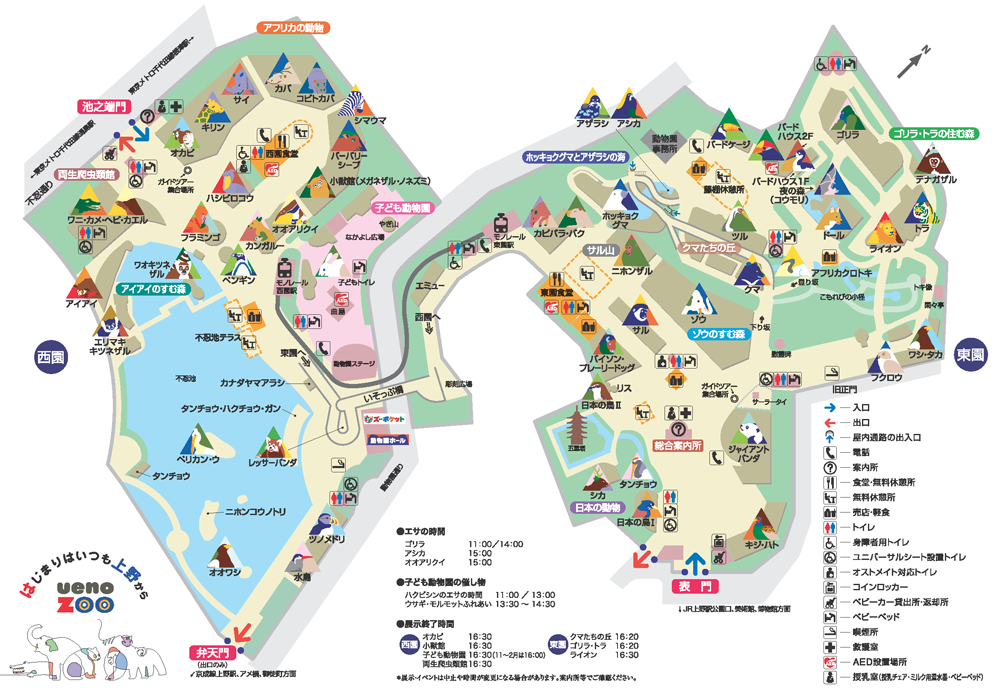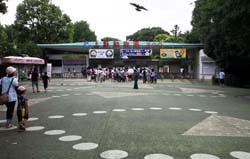
The Ueno Zoological Gardens is the oldest zoo in Japan, which opened in 1882 as an adjunct facility of the Natural Products Division, Museum Bureau, Ministry of Agriculture and Commerce, along with the museum (present-day Tokyo National Museum). Although the museum became under the control of the Department of the Imperial Household, and was named "Imperial Museum" in 1886 and renamed "Tokyo Imperial Household Museum" in 1900, the zoo under the jurisdiction of the Natural Products Division was not given its official name for a long time, and it, commonly known as "Ueno Zoo," continued to exist. The zoo was bestowed to Tokyo City (present-day Tokyo Metropolitan Government) in 1924 in commemoration of crown prince Hirohito's wedding, and was named "Ueno Imperial Zoological Gardens," and renamed the present-day "Ueno Zoological Gardens" in 1947. With the introduction of the Designated Manager System in 2006, the zoo has come under the control of the Tokyo Zoological Park Society, along with the Tama Zoological Park, the Tokyo Sea Life Park and the Inokashira Park Zoo. (9-83 Uenokoen, Taito City)
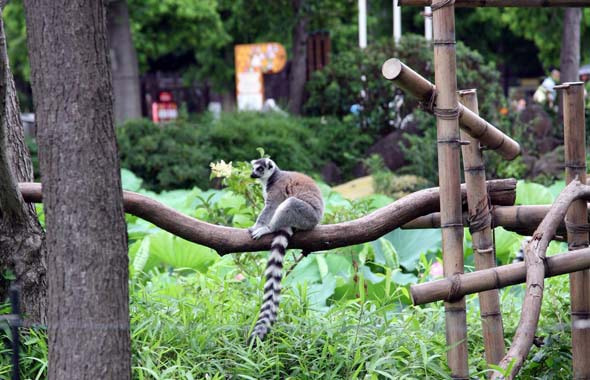
Ring-tailed lemur in the West Garden, Ueno Zoo
In the grounds of the Ueno Zoo, there were residences of the Todo family, who was the feudal lord of the Ise-Tsu domain, the Tsugaru family, the feudal lord of the Hirosaki domain, and the Hori family, the feudal lord of the Echigo-Murakami domain, in the Edo Period. Although there is a theory that the name "Ueno" is derived from Iga-Ueno in Ise that was the domain of the Todo family, some say that the name had already existed before the founding of the Edo shogunate by Ieyasu Tokugawa. Takatora Todo was given this place and constructed his second house when Ieyasu Tokugawa founded the Edo shogunate, but he immediately returned the place to the shogunate in 1624 when the construction of Toeizan Kan-eiji Temple was decided by Buddhist Priest Tenkai. He also built Toshogu Shrine on the Ueno hill and presented the shrine to the shogunate. Moreover, he built Kansho-in Temple as a sub-temple of the shrine, which was then donated to and used as a guest house by Kan-eiji Temple.
Kansho-in Temple was a family temple of the Todo family, so the family's gravestone still remains in the grounds of the zoo. It is said that Hidetada Tokugawa, the second shogun, and Iemitsu Tokugawa, the third shogun, visited Kansho-in Temple when they made a pilgrimage to Toshogu Shrine. "Kankan-tei" is a tea house that is said to have been built by Takatora Todo to treat Iemitsu Tokugawa, and "Iemitsu no Koshikake Ishi," or a stone on which Iemitsu sat after he strolled around, remains. From 1882, the year of the opening of the zoo, to 1887, this area was a front garden of the main gate at that time, and Kankan-tei was used as a foyer for visitors. (continued in the lower column)
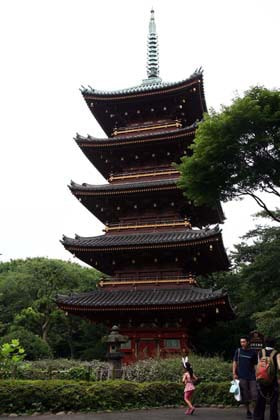
The five-storied pagoda of Kan-eiji Temple, which stands in the zoo grounds, was built in 1631 and donated by Toshikatsu Doi, the feudal lord of the Sakura domain. Later, the pagoda was burnt down in 1639, and then it was reconstructed. It is 33 meters high, and statues of Yakushi, Amitabha, Maitreya and Shakyamuni are enshrined on the first floor. The statues were donated to the Tokyo Metropolitan Government in 1958. (Nationally-designated important cultural properties)
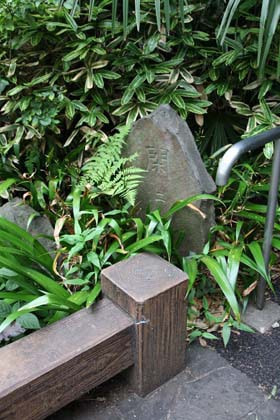
There are two bridges at the middle of a road sloping down from the Oriental ibis and crane houses. One of the bridges spanned the Senkawa aqueduct that flowed through the crane house, but the aqueduct was later covered, so in the present, there is no current. The stone monument, on which the word "Kankan-kyo" are inscribed, stands beside the bridge.
The name "Dobutsu-en," or zoo, was first used in the book "Seiyo Jijyo," or Conditions in the West, written by Yukichi Fukuzawa and published in 1866. Yoshio Tanaka, a scholar studying local products, who was one of the Japanese delegation dispatched to the 1867 Paris World's Fair, visited some facilities, including Jardin de Plantes, affiliated with le Muséum national d'histoire naturelle, and acknowledged that Japan also needs to have such a facility. Jardin de Plantes is a botanical garden, as its name indicates, and an animal-breeding farm called "Menagerie" attached to Jardin de Plantes is a facility corresponding to a zoo.
Hisanari Machida, Arinori Mori and others went to England in 1865, and were profoundly impressed by the Natural History Museum in South Kensington, London. Then, Machida became a bureaucrat at the Bureau of Expositions after serving as an officer at the Ministry of Education, and he and his subordinate bureaucrat, Yoshio Tanaka, submited "Dai-hakubutsukan Sosetsu no Kengi," or proposal to found a large-scale museum, in 1873. This scheme of establishing a large-scale museum assumed that a complex facility containing a zoo, botanical garden and library, would be constructed in Ueno Park.
In 1871, The Meiji Government set up the Bureau of Expositions, of which president was Vice-minister Shigenobu Okuma, in order to exhibit products at the 1873 Vienna World's Fair. Machida and Tanaka collected a variety of domestic products and opened a museum in Uchiyamashita-cho (present-day Uchisaiwai-cho, Chiyoda Ward) to show the products to the public. They also established an animal-breeding farm attached to the museum, and kept 77 animals of 30 species in it. In 1875, Machida became the first director of the museum under the supervision of Minister of Home Affairs Toshimichi Okubo, and made every effort to construct a new museum.(continued in the lower column)
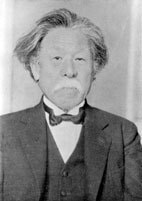
The first Domestic Industrial Exposition was held in Ueno Park in 1877. The museum in Uchiyamashita-cho was relocated to the site where the exposition was held, and a zoo attached to the museum was built in adjacent Kanshoin-ga-hara. The museum and the zoo opened in 1882. The Rokumei-kan was built at the site where the museum once stood, and opened in 1882. The zoo's main gate at that time was located at the foot of a hill on which Kankan-tei stands, a place in front of the present "Tora no Mori," or woods where tigers live, in which Asiatic lions are being shown to visitors. The zoo grounds at that time were located in an area surrounded by the present crane house, office and bird house in the East Garden, which was about one-tenth of the present area of 14.3 hectares.
In 1886, the museum and the attached zoo came under the control of the Imperial Household Agency, and belonged to the Natural Products Division, Museum Bureau. Although Tanaka, who served as the first director of the Natural Products Division, was qualified to be the first director of the zoo, Chiyomatsu Ishikawa, who was an assistant professor at the Faculty of Science, Tokyo Imperial University, became the first director because Ishikawa was appointed the Natural Products Division's director-cum-the zoo's supervisor. Ishikawa was an excellent scholar who accomplished great achievements, including releasing ayu fish native to Lake Biwa into the Tama River and raising it. He also actively exchanged animals in the Ueno Zoo for those in zoos in foreign countries, including Australia and Germany, and increased the number of animals bred and shown to visitors.
The zoo was bestowed to Tokyo City (present-day Tokyo Metropolitan Government) in 1924, and was named "Ueno Imperial Zoological Gardens." The present official name "Ueno Zoological Gardens" was given 65 years after the opening of the zoo.
[For the history of "Imperial Museum" (present-day Tokyo National Museum), please refer to "Relaxing at the Tokyo National Museum."]
Now, in addition to the East Garden, the zoo has the West Garden in the vicinity of Shinobazuno Pond, and more and 500 species of animals are kept. In the East Garden, there are sections, including a panda house, hill of bears, predatory bird house, woods of gorillas and tigers, monkey mountain, and woods of elephants. In the West Garden, there are sections, including, a zoo for children, woods of aye-ayes, animals of Africa, and herptile house.


The Ueno Zoological Gardens is the oldest zoo in Japan, which opened in 1882 as an adjunct facility of the Natural Products Division, Museum Bureau, Ministry of Agriculture and Commerce, along with the museum (present-day Tokyo National Museum). Although the museum became under the control of the Department of the Imperial Household, and was named "Imperial Museum" in 1886 and renamed "Tokyo Imperial Household Museum" in 1900, the zoo under the jurisdiction of the Natural Products Division was not given its official name for a long time, and it, commonly known as "Ueno Zoo," continued to exist. The zoo was bestowed to Tokyo City (present-day Tokyo Metropolitan Government) in 1924 in commemoration of crown prince Hirohito's wedding, and was named "Ueno Imperial Zoological Gardens," and renamed the present-day "Ueno Zoological Gardens" in 1947. With the introduction of the Designated Manager System in 2006, the zoo has come under the control of the Tokyo Zoological Park Society, along with the Tama Zoological Park, the Tokyo Sea Life Park and the Inokashira Park Zoo. (9-83 Uenokoen, Taito City)
















